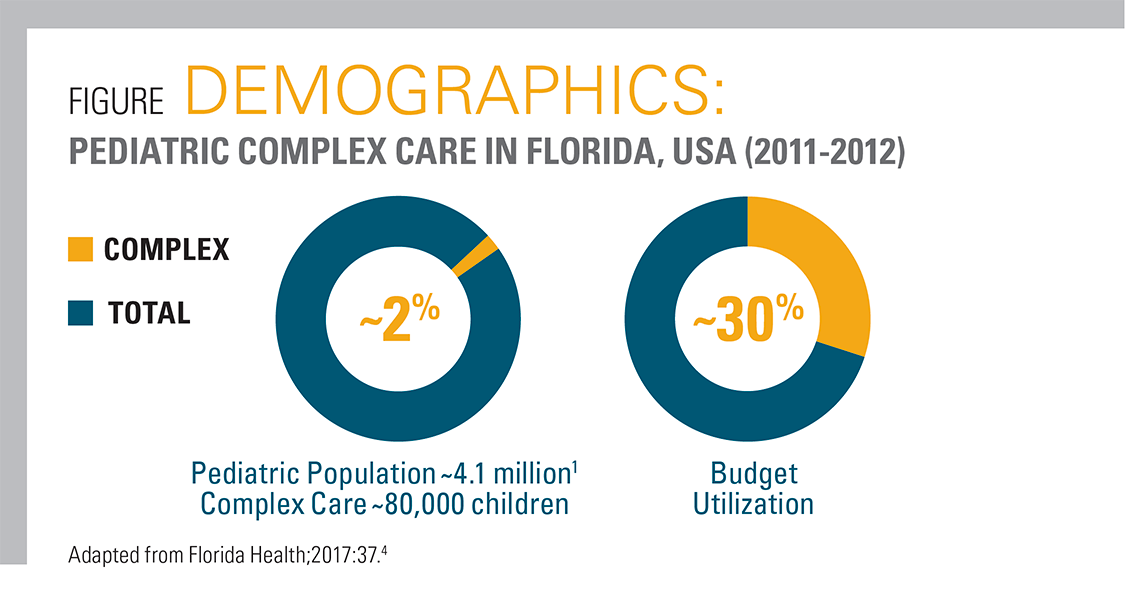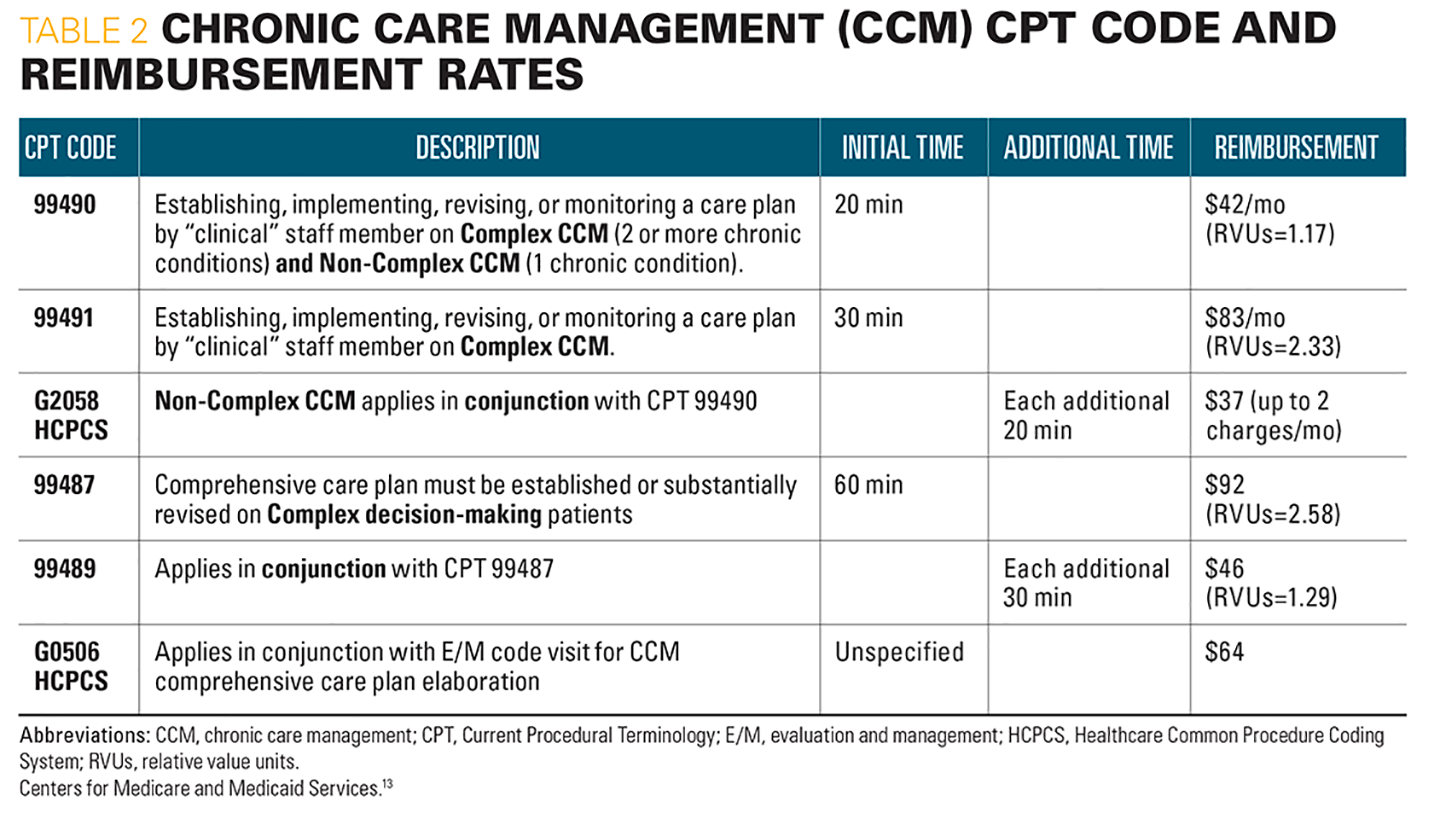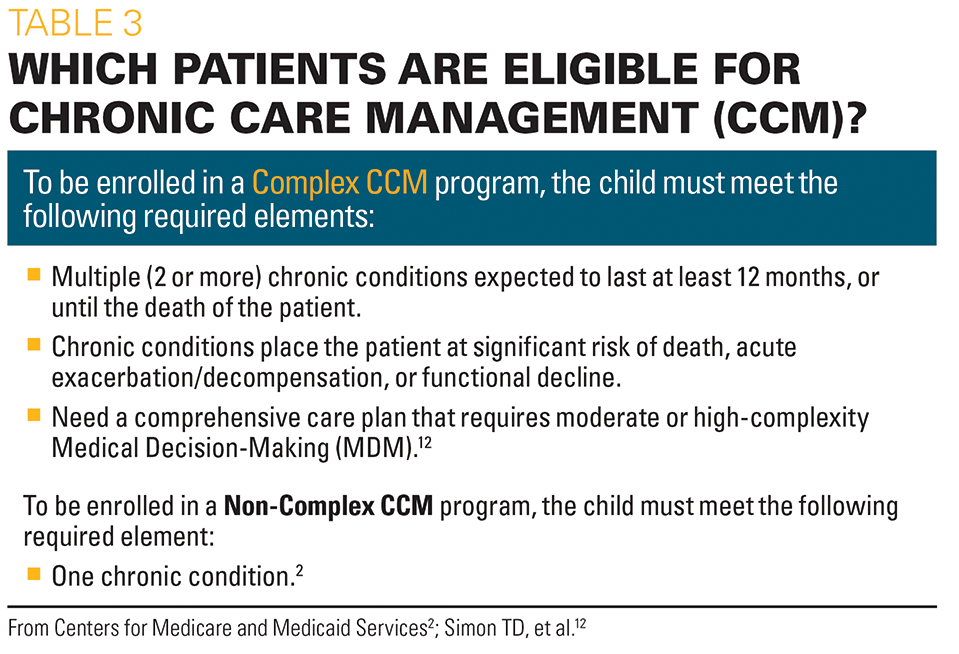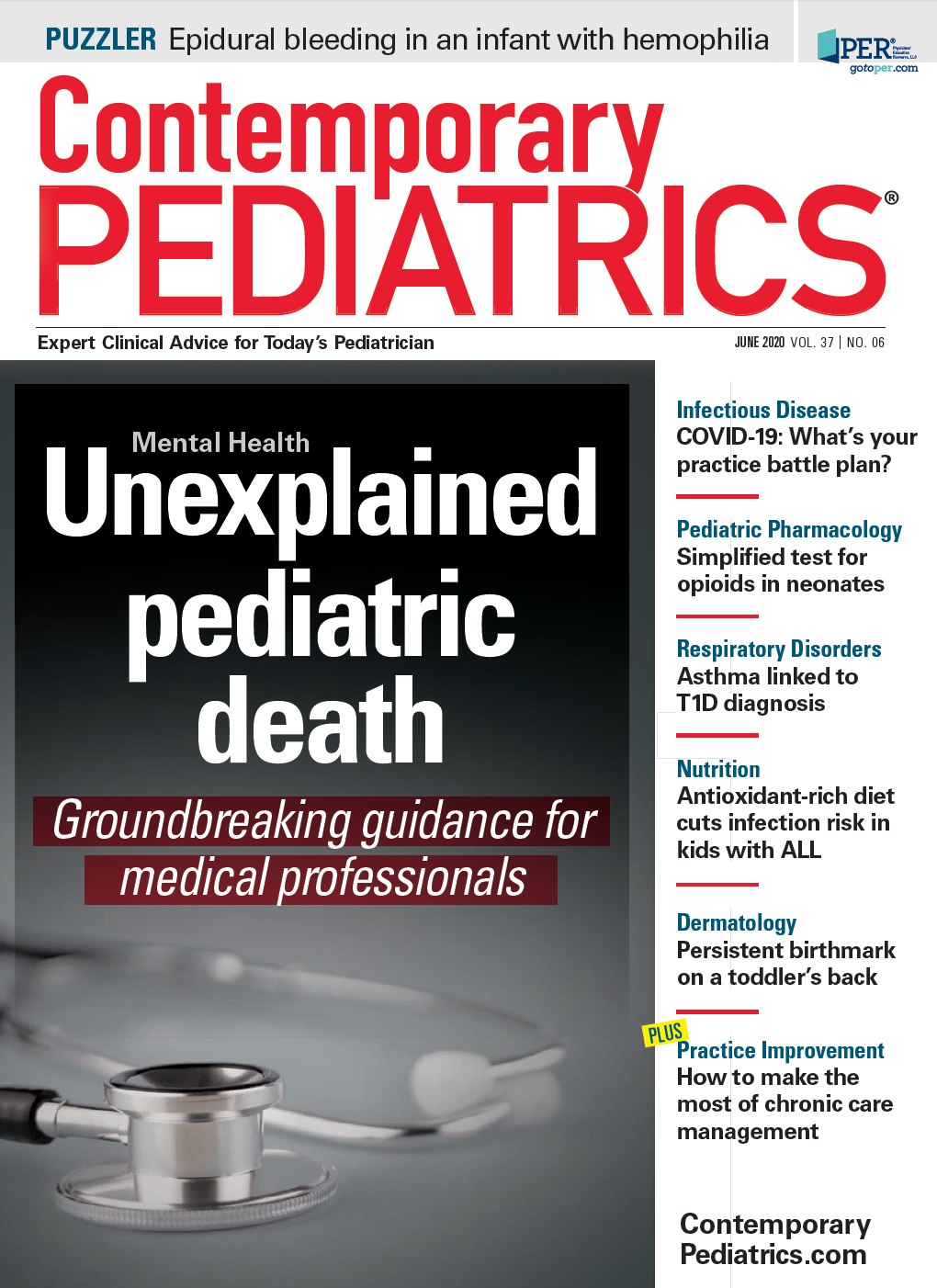Chronic care management: Increase the value of your practice!
As primary care providers, pediatricians often manage children with multiple chronic conditions. Knowing how to code properly for chronic care management (CCM) of these patients will ensure proper reimbursement for CCM services.
Previously, the perceived quality of health care had declined and had opened the door for a value-based care model. The “value” principle is derived from measuring health quality and outcomes against the cost of delivering the care. Quality of care is a composite of traditional treatment outcomes that includes patient quality of life, safety, prevention of emergency department (ED) visits, and hospital admissions.
In acknowledgment of the value of chronic disease management and the impact that it has on health care expenses and outcomes, the Centers for Medicare and Medicaid Services (CMS) had compromised to reimburse for chronic care management (CCM) services on a regular basis.
The Final Rule of the 2015 CMS Physician Fee Schedule included the new Current Procedural Terminology (CPT 99490) and is defined as (Table 1).1
This unique physician fee schedule service was created to pay separately for non-face-to-face care coordination services provided to patients with multiple chronic conditions.
Table 1

In early 2017, CMS revised the care planning element for Complex CCM adding CPT codes 99487 and 99489. Both are available in the cases that require the establishment and implementation of a coordinated comprehensive care plan. In the same month, providers may bill for either CCM (99490) or Complex CCM (99487/99489) according to individual patient needs. Payment fee schedule of the above codes is primarily intended to reimburse for clinical staff time spent on CCM services, rather than physician time.
Effective January 1, 2020, CMS created an add-on code as well for Non-Complex CCM, Healthcare Common Procedure Coding System G2058, with the intent to incentivize private practitioners to embrace this type of management program.2
Care coordination
Care coordination has been defined as “the deliberate integration of patient care activities between 2 or more participants involved in a patient’s care to facilitate the appropriate delivery of health care services.”3
Tertiary medical centers have developed Pediatric Care Coordination or Complex Care Programs that provide individualized CCM where all medical decisions are family centered. These programs are practically unachievable without a strong primary care system.
Figure

Pediatric CCM programs are relatively inexpensive to operate compared with the overall cost of patient care. The most recent Florida Department of Health (DOH) data, where I do practice, revealed that from the 4.1 million children that live in our state, only 2% (~80,000) meet complexity criteria yet they utilize one-third of our pediatric annual budget (Figure).4 A similar expenditure percentage was published by Cohen and colleagues on a large retrospective study in Ontario, Canada.5
Traditional vs nontraditional health care outcomes
A CMS evaluation contractor, Mathematica, reported substantial expenditure reduction in acute care utilization of $74 per-beneficiary-per-month (PBPM) during an 18-month period surveillance on adults.6 In contradiction, recent evidence in 2 randomized trials on adult complex “super-utilizer” populations that were enrolled on an “intensive” outpatient monitoring registered no decline on readmission rates. However, an overwhelming “positive” patient experience—96% of the survey participants—was reported in one of the studies.7,8 No well-controlled studies have been published in pediatric literature addressing treatment CCM outcomes despite that this subset of children accounts for approximately 25% of the total hospital days.9
Pediatric CCM programs focus as well on nontraditional quality-of-care markers such as family “fulfilling” experience and patient functionally. In very complex cases, implementing the “integrative” palliative care (IPC) mindset model of “being with” instead of “doing to” seems congruent.10 It is expected that our complex care pediatric practice will benefit as payment models move away from fee-for-service (FFS) to a risk-based model adjusted to each patient “hierarchical” condition category (HCC).
Table 2

The current Medicare Physician Fee Schedule (MPFS) conversion factor is $36.0391 per relative value unit. Applying the national average MPFS values (actual payment varies by geographic location), payment for CCM services ranges from $42.17 for code 99490 to $92.98 for code 99487 (Table 2).11 A noteworthy example is that if 100 patients are enrolled to CCM services, an additional amount of $42,000 a year will be generated. Per CMS rules, billing practitioners cannot submit code 99491 in the same calendar month as CPT codes 99487, 99489, or 99490.
Strategy to Implement CCM
Understanding the regulatory elements is key to implementing an effective plan. All CCMs require compliance with the following (Table 3)12:
Table 3

IDENTIFY ELIGIBLE BENEFICIARIES
To be enrolled in a CCM program. the child must meet the following required elements:
1. Multiple (2 or more) chronic conditions expected to last at least 12 months, or until the death of the patient.
2. Chronic conditions place the patient at significant risk of death, acute exacerbation/decompensation, or functional decline.
3. Needs a comprehensive care plan that requires moderate or high-complexity medical decision making (MDM).
The CMS maintains a Chronic Condition Warehouse with 27 chronic condition-defined categories, the great majority of them are compiled from adult morbidity data. No such statistics exist for the child-aged population. However, it is not an exclusive list to qualify for the CCM pediatric program.13
ADVANCE PATIENT CONSENT
In the event of an audit, documentation of a beneficiary consent is crucial. Oral consent to enroll is acceptable until a personal explanative encounter is set, when the parent and/or patient should sign the appropriate written consent. Once the initial visit is completed, a comprehensive person-centered plan for CCM will be developed and shared with family and patient.
ELIGIBLE PRACTITIONERS AND CLINICAL STAFF
The CPT manual defines a “clinical staff member” as “a person who works under the supervision of a physician or other qualified health care professional and who is allowed by law, regulation, and facility policy to perform or assist in the performance of a specified professional service, but who does not individually report that professional service.” There are no specific credentialing requirements for staff personnel. They could be directly employed by the clinician or a contracted third party. The American Medical Association (AMA) has developed an online training module “Implementing Health Coaching” for physicians who want to incorporate health coaches into their practices.
The “incidence to” billings rules applies, and the clinician is not required to be on the premises providing direct supervision. The provider must have accessibility 24 hours a day.
VALIDATED DOCUMENTATION
Any non–face-to-face care management and coordination service provided on behalf of an enrolled beneficiary by a provider or clinical staff member counts.
The following are acceptable documentation categories:
- Telephone calls/messages and emails with the family or patient.
- Laboratory and imaging reports.
- Medication reconciliation.
- Medication refills.
- Chart documentation.
- Remote monitoring of physiological data.
- Referring to and consulting with subspecialists.
- Post-hospitalization or emergency department (ED) follow-up contact.
- Home care plan elaboration, revision, and review with family and/or patient.
Our institution’s electronic medical record (EMR) team helped us to develop a Patient Outreach Navigator tool that enormously facilitates our staff to calculate the time spent and create an electronic descriptive report. In addition, we had used this instrument for Transition of Care Management (TCM) billing CPT codes 99495 and 99496 after hospital admissions or ED visits.
ELECTRONIC CARE PLAN
The following 3 requirements are necessary to submit a claim for CCM:
1. Using a certified EMR.
2. Maintaining an electronic care plan.
3. Ensuring beneficiary access to the care plan.
Our EMR offers worldwide interoperability allowing patients to view and share their electronic chart with any clinician worldwide using their mobile Internet devices (smartphone or tablet).
Our EMR Comprehensive Plan of Care includes:
1. A problem list with descriptive overview.
2. Planned interventions to address patient chronic health conditions.
3. Measurable goals and a time frame to achieve the goals.
4. Beneficiary’s agreement with the goals and plan.
MEDICAID VS PRIVATE INSURANCE
State Medicaid agencies and Medicaid Managed Care Organizations (MCOs) have the option of providing CCM as part of an enhanced benefit package. In our experience, CCM reimbursement on patients with commercial insurance is a challenge and it would be advisable to involve your institution’s billing department or, in rare cases, seek for advocacy from the American Academy of Pediatrics (AAP) coding resources.
Conclusion
The CMS had recognized that CCM is a critical component of primary care that promotes outstanding quality service, improves patient satisfaction, and reduces overall health care costs. For all these reasons, a distinctive non-face-to-face physician fee service was created to incentivize practitioners to adopt this type of management programs.
An effective CCM scope entails a timely and comprehensive exchange of the patient plan of care among the team. It is key to understanding the regulatory elements to implement an effective billing plan. Confidently, with the emergence of new clinician EMR navigator tools designed to capture and share information, pediatric outcome data will be available in the near future. At the end, fee-for-value will be accepted as the best model for lowering health care costs while increasing quality care resulting in healthier patients.
References:
1. American Medical Association. CPT 2019 (Current Procedural Terminology), Professional Edition. Chicago, IL: American Medical Association: 2019.
2. Centers for Medicare and Medicaid Services (CMS). Chronic Care Management Services. Published July 2019. Accessed April 9, 2020. https://www.cms.gov/Outreach-and-Education/Medicare-Learning-Network-MLN/MLNProducts/Downloads/ChronicCareManagement.pdf
3. Bodenheimer T. Coordinating care—a perilous journey through the health care system. N Engl J Med. 2008;358(10):1064-1071. doi:10.1056/nejmhpr0706165
4. Florida Health. The future of CMS. Statewide leadership meeting. December 9, 2017. Accessed April 9, 2020. http://www.floridahealth.gov/programs-and-services/childrens-health/cms-plan/cms-plan-invitation-to-negotiate/_documents/the-future-of-cms.pdf#search=%22keisha%20reid%22
5. Cohen E, Berry JG, Camacho X, Anderson G, Wodchis W, Guttmann A. Patterns and costs of health care use of children with medical complexity. Pediatrics. 2012;130(6):e1463-e1470. doi:10.1542/peds.2012-0175
6. Schurrer J, O’Malley A, Wilson C, McCall N, Jain N. Evaluation of the Diffusion and Impact of the Chronic Care Management (CCM) Services: Final Report. Mathematica Policy Research; 2017. Accessed April 9, 2020. https://innovation.cms.gov/files/reports/chronic-care-mngmt-finalevalrpt.pdf
7. Finkelstein A, Zhou A, Taubman S, Doyle J. Health care hotspotting—a randomized, controlled trial. N Engl J Med. 2020;382(2):152-162. doi:10.1056/NEJMsa1906848
8. Zulman DM, Pal Chee C, Ezeji-Okoye SC, et al. Effect of an intensive outpatient program to augment primary care for high-need Veterans Affairs patients: a randomized clinical trial. JAMA Intern Med. 2017;177(2):166-175. doi:10.1001/jamainternmed.2016.8021
9. Bergman DA, Keller D, Kuo DZ, et al. Costs and use for children with medical complexity in a care management program. Pediatrics. 2020;145(4):e20192401. doi: 10.1542/peds.2019-2401.
10. Milstein J. A paradigm of integrative care: healing with curing throughout life, “being with” and “doing to.” J Perinatol. 2005;25(9):563-568. doi:10.1038/sj.jp.7211358
11. Centers for Medicare and Medicaid Services (CMS). Revisions to payment policies under the Medicare Physician Fee Schedule, Quality Payment Program, and other revisions to Part B for CY 2020. CMS.gov website. Published November 15, 2019. Accessed April 9, 2020. https://www.cms.gov/Medicare/Medicare-Fee-for-Service-Payment/PhysicianFeeSched/PFS-Federal-Regulation-Notices-Items/CMS-1715-F
12. Simon TD, Cawthon ML, Popalisky J, Mangione-Smith R; Center of Excellence on Quality of Care Measures for Children with Complex Needs (COE4CCN). Development and validation of the pediatric medical complexity algorithm (PMCA) Version 2.0. Hosp Pediatr. 2017;7(7):373-377. doi:10.1542/hpeds.2016-0173
13. Centers for Medicare and Medicaid Services. Chronic Conditions Data Warehouse (CCW). Condition categories. Accessed April 9, 2020. https://www2.ccwdata.org/web/guest/condition-categories
Having "the talk" with teen patients
June 17th 2022A visit with a pediatric clinician is an ideal time to ensure that a teenager knows the correct information, has the opportunity to make certain contraceptive choices, and instill the knowledge that the pediatric office is a safe place to come for help.
Meet the Board: Vivian P. Hernandez-Trujillo, MD, FAAP, FAAAAI, FACAAI
May 20th 2022Contemporary Pediatrics sat down with one of our newest editorial advisory board members: Vivian P. Hernandez-Trujillo, MD, FAAP, FAAAAI, FACAAI to discuss what led to her career in medicine and what she thinks the future holds for pediatrics.
